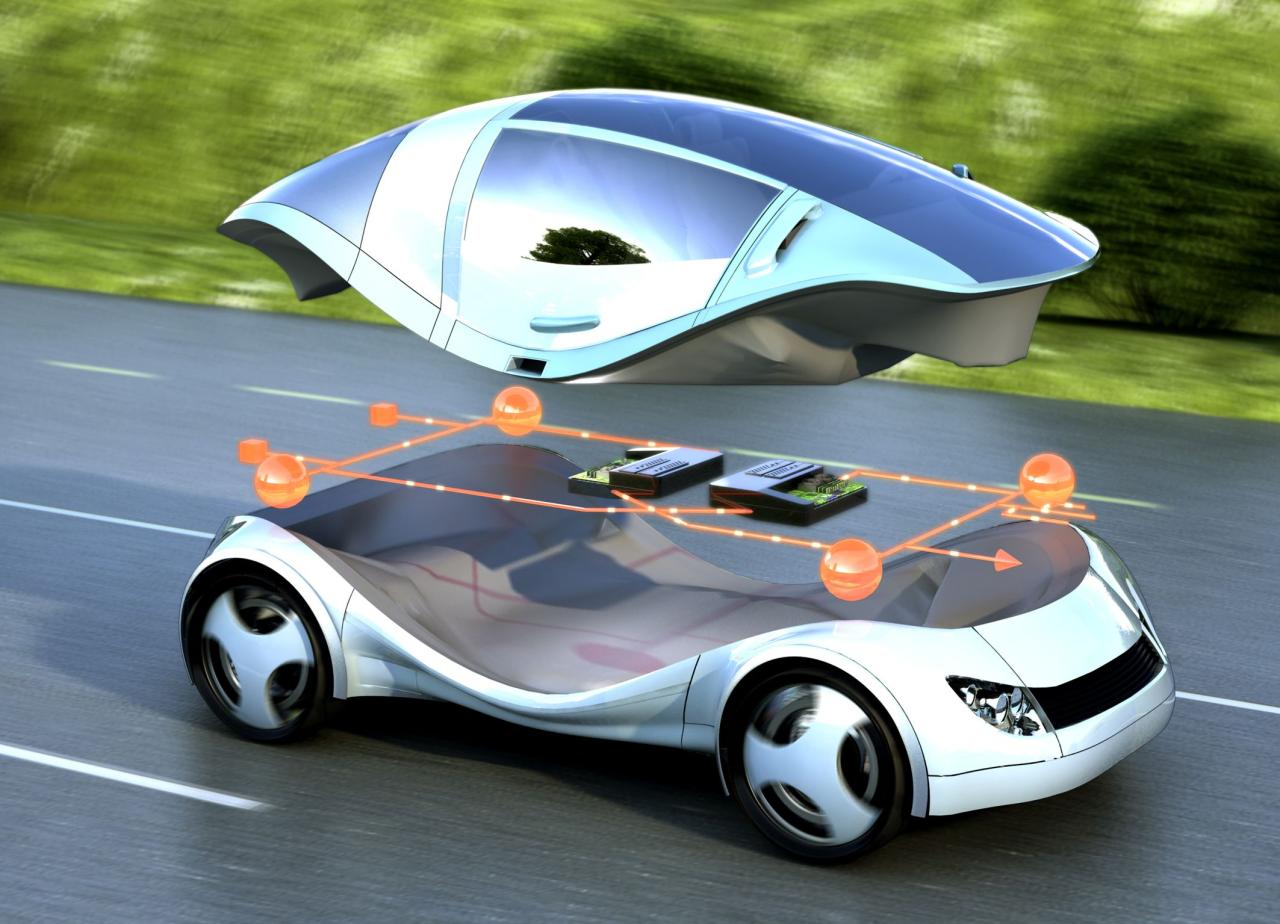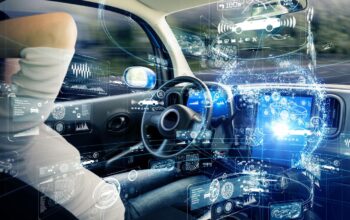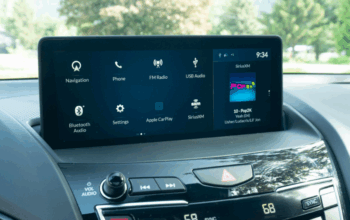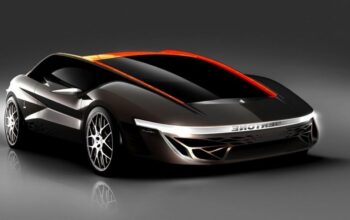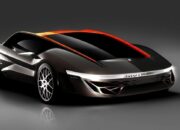The automotive industry stands at the precipice of its most significant transformation since the invention of the internal combustion engine. For over a century, the rumble of gasoline and diesel engines has defined personal transportation, but a silent revolution is rapidly gaining momentum. Electric mobility is no longer a distant dream but a tangible reality, reshaping how we commute, deliver goods, and even envision our cities. This profound shift, driven by environmental urgency, technological breakthroughs, and evolving consumer preferences, promises a cleaner, quieter, and potentially more efficient future for driving. This comprehensive article delves into the multifaceted aspects of electric mobility, exploring its underlying technologies, environmental benefits, economic implications, infrastructure challenges, societal impacts, and the exciting trajectory of its future.
The Genesis of Electric Vehicles
While often perceived as a modern invention, the concept of electric vehicles (EVs) dates back to the 19th century, predating gasoline-powered automobiles. Early EVs offered advantages like quiet operation and lack of noxious fumes, but their limited range and the eventual mass production of affordable Ford Model T sidelined them for decades. The resurgence began in the late 20th century, fueled by growing environmental concerns, volatile oil prices, and advancements in battery technology. Today, we are witnessing the full-scale renaissance of electric propulsion.
The core of electric mobility lies in the powertrain, which fundamentally differs from traditional vehicles:
A. Battery Electric Vehicles (BEVs): These are purely electric, running solely on electricity stored in a large battery pack. They produce zero tailpipe emissions and are charged by plugging into an external power source. Examples include Tesla models, Nissan Leaf, and Hyundai Kona Electric. B. Plug-in Hybrid Electric Vehicles (PHEVs): These combine an electric motor and a battery with a gasoline engine. They can run on electricity for a limited range (typically 30-80 km) and then switch to gasoline or use both for extended journeys. PHEVs offer flexibility, addressing range anxiety for some consumers. C. Hybrid Electric Vehicles (HEVs): Unlike PHEVs, HEVs cannot be plugged in to charge their batteries externally. They use regenerative braking and the gasoline engine to charge a smaller battery, which assists the engine, improving fuel efficiency. Toyota Prius is a classic example. D. Fuel Cell Electric Vehicles (FCEVs): These generate electricity through a chemical reaction between hydrogen and oxygen in a fuel cell, producing only water vapor as a byproduct. While promising ultra-clean operation, FCEVs face significant challenges in hydrogen production, storage, and refueling infrastructure.
The focus of the current electric mobility revolution largely centers on BEVs and PHEVs, given their immediate feasibility and rapidly improving technology.
Environmental Imperatives Driving the Shift
The most compelling argument for electric mobility is its profound environmental benefit. The transportation sector is a major contributor to global greenhouse gas emissions and urban air pollution.
A. Reducing Greenhouse Gas Emissions: Internal combustion engine (ICE) vehicles release carbon dioxide (CO2) and other greenhouse gases, which contribute to climate change. BEVs, with zero tailpipe emissions, significantly reduce this footprint, especially when powered by renewable energy sources (wind, solar, hydro). The “well-to-wheel” emissions (including electricity generation) of EVs are consistently lower than ICE vehicles in most regions, and this gap is widening as power grids decarbonize. B. Improving Air Quality: ICE vehicles emit pollutants like nitrogen oxides (NOx), particulate matter (PM2.5), and volatile organic compounds (VOCs), which cause respiratory illnesses, heart disease, and smog, particularly in dense urban areas. The widespread adoption of EVs directly leads to cleaner urban air, improving public health outcomes and quality of life in cities. C. Noise Pollution Reduction: Electric vehicles operate far more quietly than their gasoline counterparts, especially at lower speeds. This reduction in noise pollution contributes to quieter streets, making cities more pleasant for pedestrians and residents, and potentially improving sleep quality for those living near busy roads. D. Reduced Dependence on Fossil Fuels: Shifting to electric vehicles lessens global reliance on finite fossil fuel reserves, contributing to energy security and insulating economies from volatile oil price fluctuations. This also redirects investments towards sustainable energy infrastructure.
The environmental dividends of electric mobility extend beyond the tailpipe, influencing energy policy and urban planning towards a more sustainable future.
Technological Pillars of Electric Mobility
The rapid ascent of electric mobility is underpinned by significant advancements in several key technological areas.
A. Battery Technology
The battery pack is the heart of an EV, dictating its range, performance, and cost. Lithium-ion batteries currently dominate the market due to their high energy density and relatively long lifespan.
- Increased Energy Density: Researchers are constantly pushing the boundaries of energy density, allowing more energy to be stored in smaller, lighter battery packs. This directly translates to longer driving ranges for EVs.
- Faster Charging Rates: Advancements in battery chemistry and charging infrastructure are enabling quicker charging times, mitigating range anxiety and making EVs more convenient for long-distance travel.
- Improved Longevity and Durability: Battery packs are designed to last for many years and hundreds of thousands of kilometers, often outliving the vehicle itself. Warranties typically cover 8 years or 160,000 km, ensuring consumer confidence.
- Cost Reduction: The cost of battery packs has plummeted dramatically over the past decade, making EVs more affordable and competitive with ICE vehicles. This trend is expected to continue, reaching cost parity in the near future.
- Next-Generation Batteries: Solid-state batteries, lithium-sulfur, and sodium-ion batteries are among the promising next-generation technologies that could offer even higher energy density, faster charging, improved safety, and lower costs.
B. Electric Motors and Powertrains
Electric motors are inherently more efficient than internal combustion engines, converting a higher percentage of electrical energy into mechanical motion.
- High Efficiency: Electric motors can achieve efficiencies upwards of 90%, compared to 20-40% for gasoline engines. This means less energy is wasted as heat.
- Instant Torque: Electric motors deliver maximum torque from zero RPM, providing instant acceleration and a responsive driving experience that often surpasses traditional vehicles.
- Simplified Drivetrain: EVs typically have fewer moving parts, often using a single-speed transmission or no transmission at all, leading to reduced maintenance needs and enhanced reliability.
- Regenerative Braking: A key feature of EVs, regenerative braking allows the electric motor to act as a generator when the vehicle decelerates, converting kinetic energy back into electricity and recharging the battery. This improves efficiency and extends range, especially in urban stop-and-go driving.
C. Charging Infrastructure
The availability and accessibility of charging infrastructure are crucial for widespread EV adoption.
- Level 1 Charging: Uses a standard household 120V (in North America) or 220-240V (in many other regions) outlet. It’s the slowest option, often used for overnight charging at home.
- Level 2 Charging: Uses a 240V AC outlet (common in homes or public charging stations). It provides significantly faster charging than Level 1, typically adding 30-50 km of range per hour.
- DC Fast Charging (Level 3): These stations deliver direct current (DC) power directly to the vehicle’s battery, enabling very rapid charging. Depending on the charger and vehicle, they can add hundreds of kilometers of range in 20-30 minutes. This is crucial for long-distance travel.
- Wireless Charging: Emerging technology that allows EVs to charge wirelessly by parking over an inductive charging pad. While less efficient than wired charging, it offers convenience.
- Battery Swapping: A less common alternative where depleted battery packs are quickly swapped for fully charged ones. While technically feasible, it faces standardization and logistical challenges.
Governments and private companies are investing heavily in expanding public charging networks, including fast chargers along major highways and in urban centers, to alleviate range anxiety and support the growing EV fleet.
Economic and Societal Impacts
The transition to electric mobility carries significant economic and societal ramifications, creating new opportunities while posing certain challenges.
A. Cost of Ownership
While the upfront purchase price of an EV can sometimes be higher than a comparable ICE vehicle, the total cost of ownership (TCO) often favors EVs over their lifespan.
- Lower Fuel Costs: Electricity is generally cheaper per kilometer than gasoline or diesel, especially when charging at home during off-peak hours.
- Reduced Maintenance: EVs have fewer moving parts than ICE vehicles, meaning less wear and tear, and no oil changes, spark plugs, or complex exhaust systems to maintain. This translates to lower maintenance costs.
- Government Incentives: Many governments offer purchase subsidies, tax credits, or reduced registration fees for EVs to accelerate adoption.
- Higher Resale Value: Early indications suggest that EVs may retain a higher percentage of their value over time, partly due to less mechanical depreciation.
B. Job Creation and Transformation
The shift to EVs will lead to a significant reallocation of jobs within the automotive sector.
- New Jobs: Growth in battery manufacturing, charging infrastructure development, software engineering for EVs, and renewable energy sectors will create numerous new employment opportunities.
- Job Transformation: Traditional automotive manufacturing jobs related to ICE powertrains will decline, requiring significant retraining and upskilling for the existing workforce to transition into EV component production or maintenance.
- Supply Chain Shifts: The global automotive supply chain will reorient from petroleum-based components to battery materials, rare earth minerals, and power electronics.
C. Grid Modernization and Energy Management
Mass EV adoption will place new demands on electrical grids, necessitating modernization and smart energy management.
- Increased Demand: While overall demand can be managed, peak charging times could strain local grids.
- Smart Charging: Technologies like vehicle-to-grid (V2G) and smart charging systems can allow EVs to charge during off-peak hours or even feed power back to the grid during periods of high demand, essentially turning them into mobile energy storage units.
- Renewable Energy Integration: The rise of EVs can accelerate the integration of renewable energy sources, as excess renewable energy (e.g., solar during the day) can be stored in EV batteries.
D. Urban Planning and Infrastructure Development
Electric mobility will profoundly influence urban planning and the built environment.
- Public Charging Hubs: The need for ubiquitous public charging will drive the development of charging hubs in residential areas, workplaces, shopping centers, and public parking lots.
- Curbside Charging: Cities may need to implement creative solutions for street parking and curbside charging for residents without private garages.
- Reduced Noise and Emissions in Cities: Quieter, cleaner EVs will contribute to more livable urban environments, potentially freeing up space previously allocated to fossil fuel infrastructure (e.g., gas stations).
- Micro-mobility Integration: EVs will coexist with other forms of electric micro-mobility (e-bikes, e-scooters), requiring integrated urban transport planning.
Addressing Challenges and Overcoming Hurdles
Despite the immense promise, the transition to electric mobility is not without its challenges. Addressing these effectively is crucial for widespread adoption.
A. Range Anxiety
The fear of running out of battery power before reaching a charging station remains a significant concern for potential EV buyers.
- Solutions: Continued improvements in battery technology for longer ranges, rapid expansion of reliable fast-charging networks, and better navigation systems that integrate charging station information are key to overcoming this.
- Education: Educating consumers about typical driving patterns and the actual range capabilities of modern EVs is also vital. Most daily commutes are well within current EV ranges.
B. Charging Infrastructure Accessibility and Speed
While growing, the charging infrastructure still faces hurdles regarding universal accessibility and charging speed, particularly for long-distance travel.
- Standardization: Different charging connectors and payment systems can create confusion. Efforts towards standardization (e.g., CCS, NACS) are ongoing.
- Rural Areas: Expanding charging networks into rural and underserved areas is critical to ensure equitable access.
- Reliability: Ensuring chargers are consistently operational and well-maintained is paramount for user confidence.
C. Battery Production and Raw Material Sourcing
The increasing demand for EV batteries raises concerns about the supply chain for raw materials like lithium, cobalt, nickel, and graphite.
- Ethical Sourcing: Ensuring that these materials are sourced ethically and responsibly, without child labor or environmental degradation, is a growing imperative.
- Recycling and Second Life: Developing robust battery recycling infrastructure is crucial to recover valuable materials and reduce reliance on virgin mining. Giving old EV batteries a “second life” in stationary energy storage applications also extends their utility.
- Diversification of Materials: Research into alternative battery chemistries that use more abundant materials is ongoing.
D. Grid Capacity and Reliability
While smart charging and V2G technologies can help, a massive influx of EVs will necessitate significant investment in grid upgrades, especially at local distribution levels.
- Smart Grid Implementation: Implementing smart grid technologies that can monitor and manage electricity flow more efficiently will be vital.
- Renewable Energy Expansion: Accelerating the deployment of renewable energy sources will ensure that the electricity powering EVs is clean.
Policy and Regulatory Frameworks
Governments worldwide play a pivotal role in accelerating the transition to electric mobility through supportive policies and regulatory frameworks.
A. Emissions Regulations: Setting stringent emissions standards for new vehicles, including targets for CO2 reduction, has been a primary driver for automakers to invest in EVs. B. Financial Incentives: Purchase subsidies, tax credits, sales tax exemptions, reduced vehicle registration fees, and toll exemptions make EVs more financially attractive to consumers. C. Infrastructure Investment: Direct government funding and public-private partnerships for building out charging networks, especially fast chargers on highways and in public spaces. D. Fleet Electrification Mandates: Requiring government and commercial fleets to transition to EVs can create a significant demand signal and scale up production. E. Research and Development Funding: Investing in battery technology, charging solutions, and smart grid research can accelerate innovation. F. Urban Planning Policies: Implementing policies that prioritize EV charging in new constructions, offer preferential parking, or create low-emission zones.
International collaboration and consistent policies are essential to create a harmonized global market for EVs and accelerate the pace of change.
The Future Trajectory of Electric Mobility
The journey of electric mobility is far from over; in fact, it’s just beginning to accelerate. Several exciting trends and developments promise to further cement its position as the future of driving.
A. Hyper-Efficient EVs and Aerodynamics
Future EVs will push the boundaries of efficiency through advanced battery technology, lighter materials, and sophisticated aerodynamic designs. Expect vehicles with even longer ranges that require less frequent charging.
B. Autonomous Electric Vehicles
The convergence of electric powertrains and autonomous driving technology is a natural synergy. Electric platforms provide the necessary power and quiet operation for the myriad sensors and computing power required for self-driving capabilities. Autonomous electric robotaxis could revolutionize urban transport, offering on-demand, shared, and highly efficient mobility.
C. Vehicle-to-Grid (V2G) and Bidirectional Charging
V2G technology allows EVs to not only draw power from the grid but also feed power back into it. This turns the collective EV fleet into a massive distributed energy storage system, capable of stabilizing the grid, supporting renewables, and potentially earning revenue for EV owners. Bidirectional charging will become a standard feature in many future EVs.
D. Sustainable Manufacturing and Circular Economy
The focus on sustainability will extend beyond tailpipe emissions to the entire lifecycle of an EV. This includes:
- Green Manufacturing: Using renewable energy in battery and vehicle production.
- Recycled Materials: Incorporating more recycled materials into vehicle components.
- Battery Re-purposing: Giving batteries a “second life” in stationary energy storage applications before final recycling.
- Modular Design: Designing vehicles for easier repair, upgrade, and disassembly to facilitate recycling.
E. Air Mobility and Electric Vertical Take-off and Landing (eVTOL) Aircraft
The principles of electric propulsion are extending beyond ground vehicles to encompass “air taxis” and eVTOL aircraft. These electric aerial vehicles promise to revolutionize urban air mobility, offering new forms of rapid, clean transportation for short distances, potentially bypassing ground traffic.
F. Personalization and Software-Defined Vehicles
Future electric vehicles will be increasingly software-defined, allowing for over-the-air updates for new features, performance enhancements, and even personalization of the driving experience. This shift makes vehicles more like constantly evolving digital devices rather than static pieces of hardware.
Conclusion
Electric mobility is much more than just a change in propulsion; it represents a fundamental paradigm shift in how we conceive, build, and interact with vehicles. It is a powerful confluence of environmental necessity, technological ingenuity, and economic transformation. While challenges remain in infrastructure, raw material sourcing, and grid modernization, the relentless pace of innovation, coupled with supportive governmental policies and increasing consumer demand, is steadily dismantling these barriers.
The future of driving is undeniably electric. It promises cleaner air, quieter cities, reduced reliance on fossil fuels, and a technologically advanced, interconnected mobility ecosystem. As the world accelerates towards a sustainable future, electric vehicles stand as a beacon of progress, driving us towards a healthier planet and a more efficient, enjoyable, and sustainable way to move. The silent revolution is here, and it is reshaping our world, one electric mile at a time.


